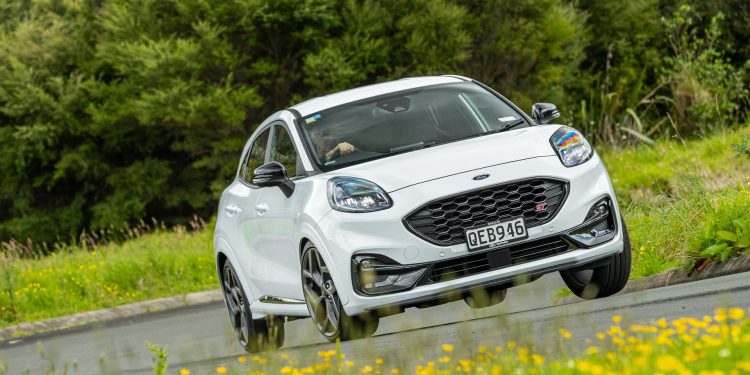2023 Ford Puma ST review
Words: Peter Louisson | Photos: Isaac Western
ST models from Ford are usually fun steers but would that be the case for a front-drive compact crossover? We check the claws of the Puma ST.
I wasn’t really imagining a titivated front-wheel drive compact crossover with a twist beam rear end and a 1.0-litre engine aided by a belt starter generator would prove to be much of a wee weapon.
But the ST without the ‘Line’ suffix proved a genuine surprise, not so much for its straight line speed but for how it manages the trip from the start point to the destination. It’s fast point to point, like its feline namesake.
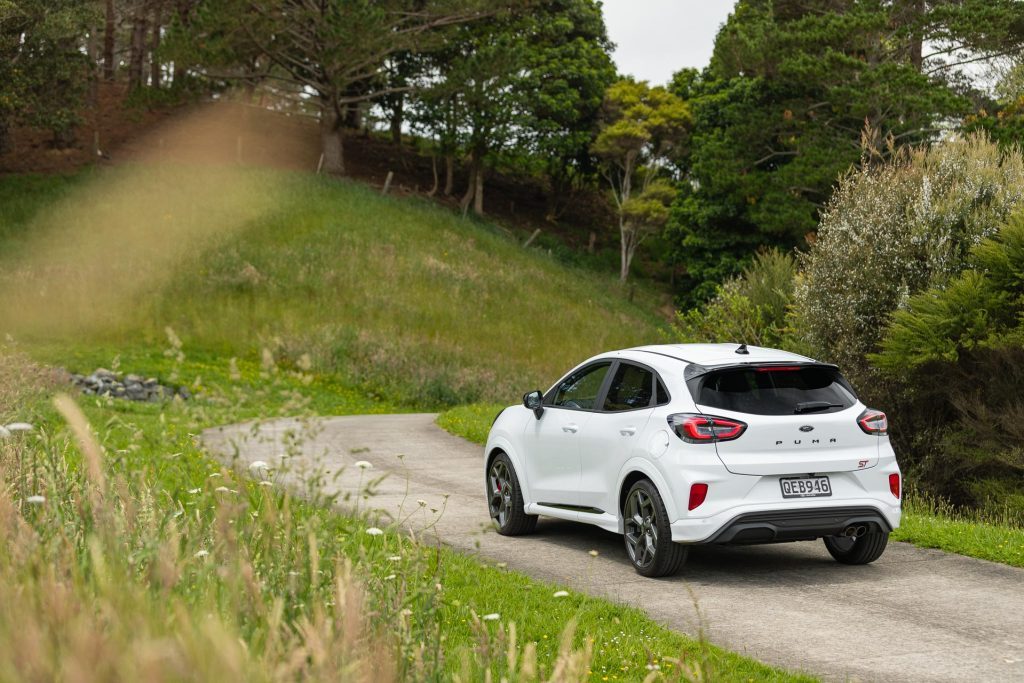
We only wish we’d driven the Ford Puma ST Line so we could have put the ST into better context. That costs $40k whereas the ST newcomer is $46,490. A bit confusing huh, both being STs and all?
Well to confuse things further, the ST, the new one, is also a mild hybrid. And they both come with a boosted 1.0-litre three-cylinder engine.
In the case of the ST Line, it makes 92kW and 210Nm whereas the ST is good for 118kW and 200Nm but when the input of the integrated belt starter generator is added that figure swells to 125kW and 248Nm.
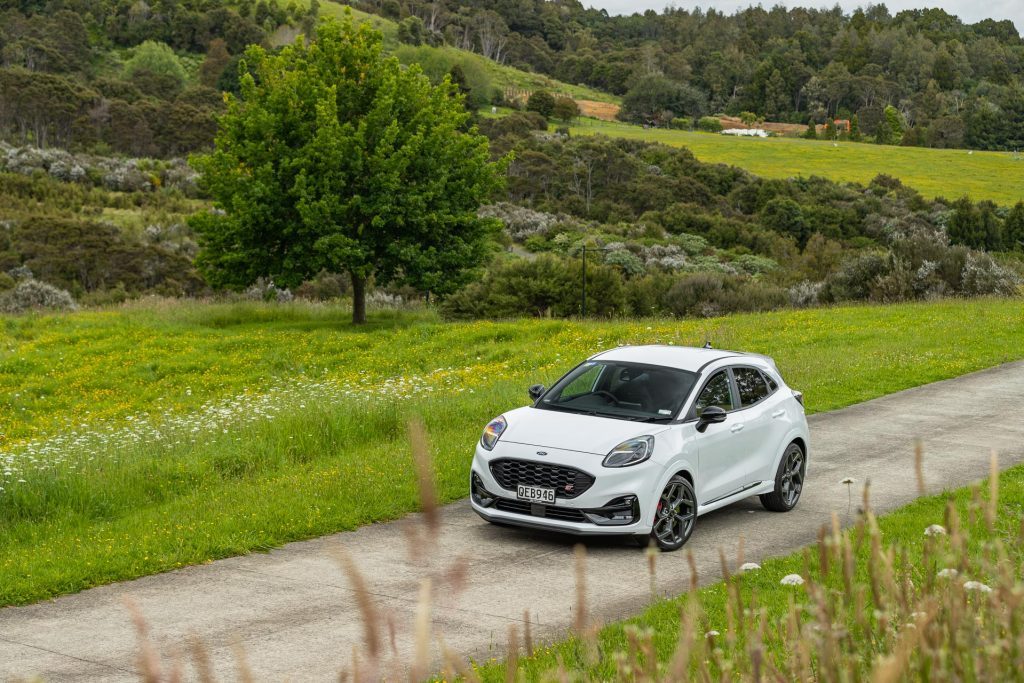
The IBSG is said to add 11.5kW of power and 50Nm of torque, facilitating stop/start, boosting performance and regenerating the 48v lithium-ion battery which we figure is small (no kWh rating given) because the hidden underfloor boot area is huge, around 80L.
The ST engine, the most potent of the 1.0 turbocharged units Ford produces, is mated to a seven-speed “automatic transmission”.
By which Ford really means a dual-clutch or “Powershift” unit. The ST is meant to run a 7.3sec sprint time while overall fuel use is a quoted 6.2L/100km (140g of CO2).
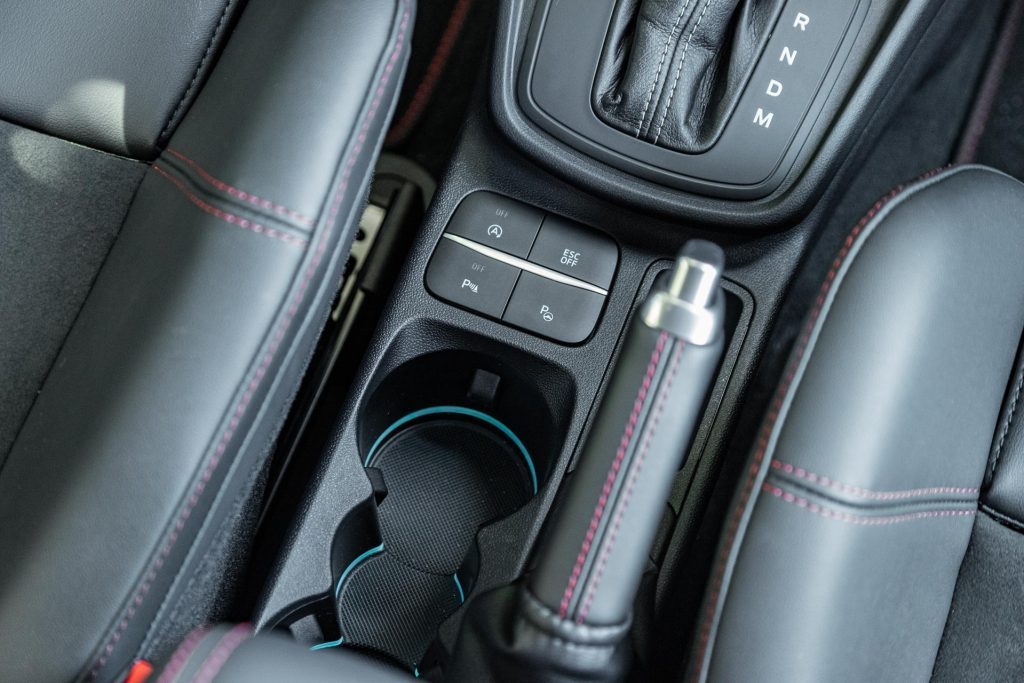
That compares with 8.6sec and 5.4L/100km for the ST Line which wears 215/55R17 rubber. The ST, in contrast, runs on 225/40ZR19s and they’re Continental Sport Contact 7s.
That largely explains the extra fuel use, and the added power output accounts for the remainder. We saw figures in the fives when using cruise control on the motorway, with a high in the mid-eights after performance testing.
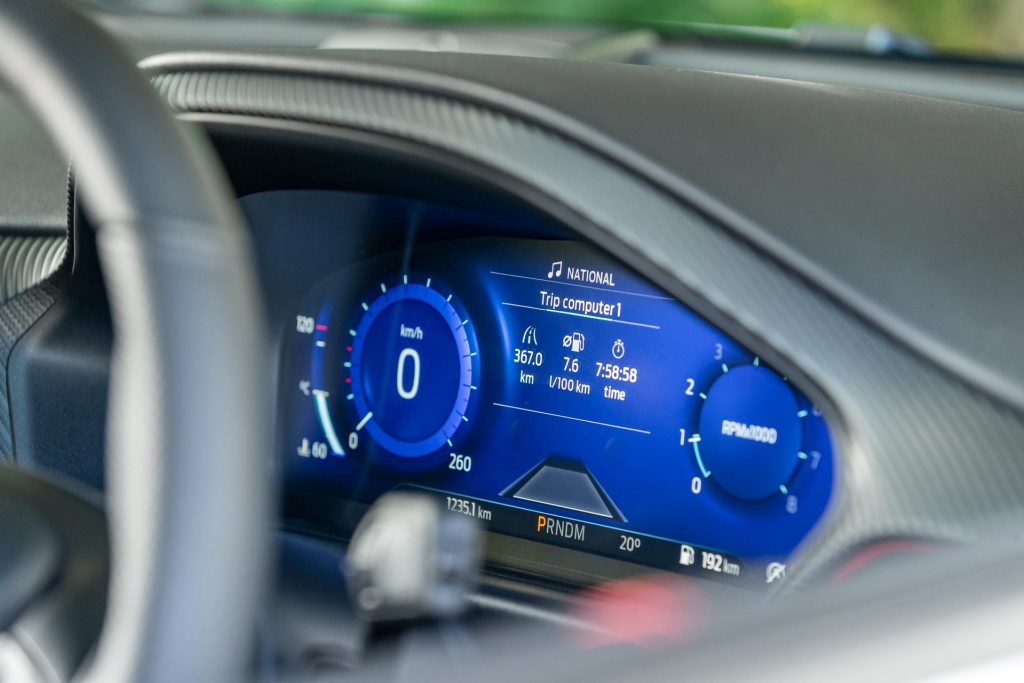
Split personality?
This is a bit of a Jekyll and Hyde machine. In town it tootles about quietly, though is noticeably firm over sharp bumps because of the extra starch in the suspension.
The rear twist beam axle is said to be more than 50 per cent stiffer compared with the standard Puma’s. It also has a 28mm antiroll bar integrated into the U‑section, and there’s a 24mm unit up front.
Ford saw fit to install uprated “force vectoring springs” which are said to enhance the Puma ST’s stability, agility and responsiveness. They “enable cornering forces to travel directly into the spring, for increased lateral stiffness”.
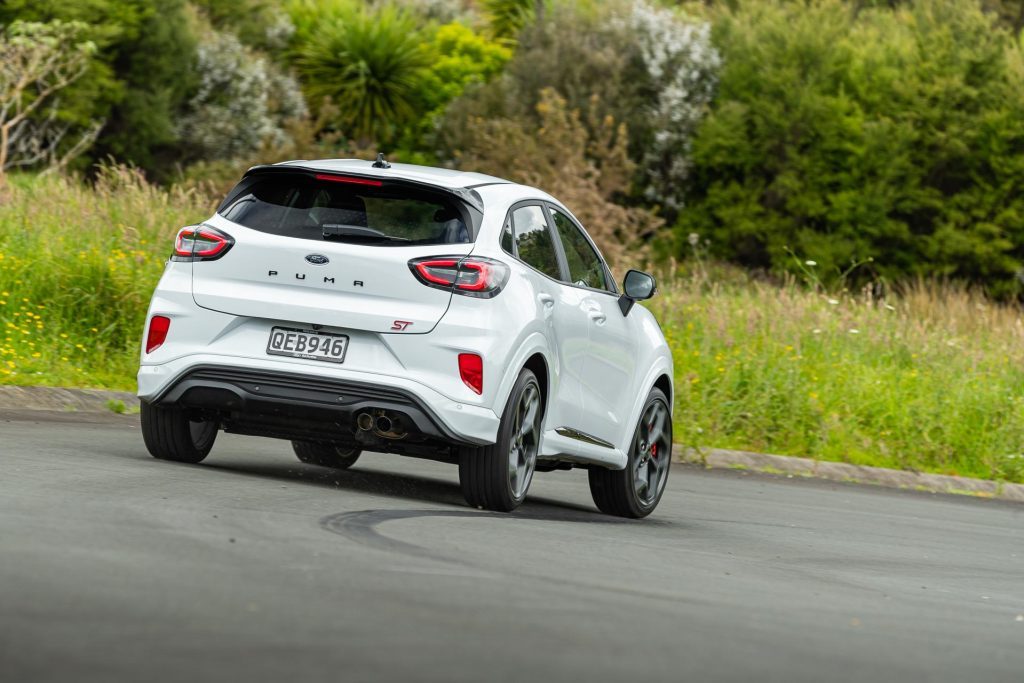
Further, Hitachi twin-tube frequency-reactive dampers at the front and rear aim to “deliver the stiffness needed for enhanced body control alongside the compliance to isolate smaller road imperfections for high-speed refinement.”
It all works as suggested at speed, body roll minimised, bumps quashed. At town speeds, not quite so much.
What else? The steering ratio is almost 25 per cent faster and the system features ST-specific front knuckles, steering arm and steering rack gearing. Peer up under where your feet rest and you can see some of it!
So turn-in is sharp, razor-like, and so too brakes, the 325mm front discs 17 per cent bigger while its brake booster is tuned for improved feedback.
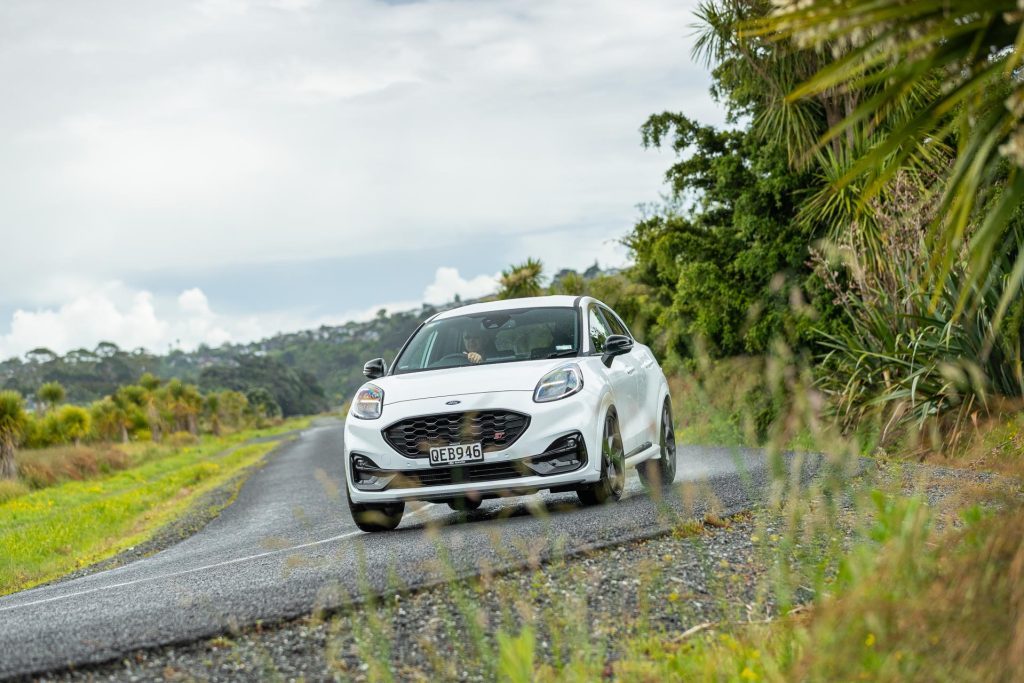
And the final Ford Performance upgrade? The mild hybrid system engages energy recovery more avidly for faster recharging of the 48-volt battery pack.
This means the belt-starter generator can offer extra torque supplementation for enhanced performance at lower engine speeds.
Surprising go for a 1.0T
And this powertrain does seem to have the ability to work across a broad spread of revs. In town it pulls valiantly from 1500rpm, and even the Eco engine mode doesn’t feel like it’s only running on two instead of three cylinders.
Out of town you simply don’t need to engage Sport mode; Normal is heaps. Here it can run handily in the 2000-3000rpm range, though we preferred 3000-4000, and from 3500-4500, there’s a palpable boost in energy output.
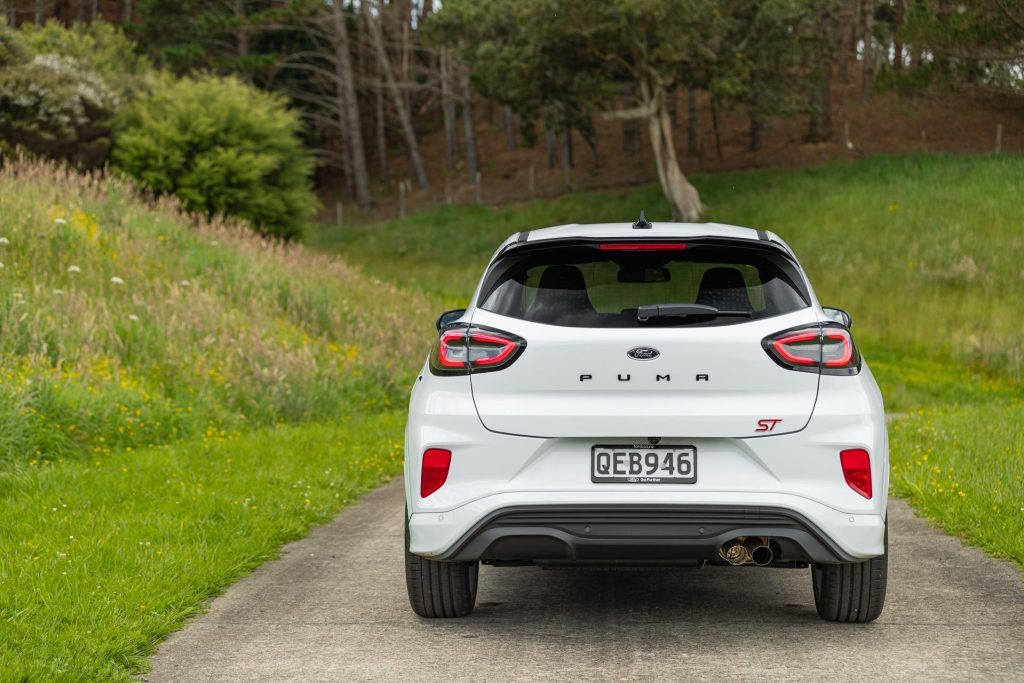
Problem is in the upper gears you’re soon way over the odds. It eases along nicely at 110 with 2500rpm showing. Good for the Expressway then.
Once out of town and on rural roads, the primary ride is good. Shorter, higher frequency bumps can cause occasional thumping but on the whole the ride is more than acceptable given how this handles…which is outrageously well.
It just seems to rail through corners. Our reference bends this absolutely aced, holding speeds I don’t believe any other small FWD crossover could match. Moreover, it steers and stops like an ace.
The turn-in is astoundingly quick and the well weighted wheel fizzes with vim. The work they’ve done on the brakes pays off too, the pedal easily modulated, the emergency brake distances in the 34m area highly respectable.
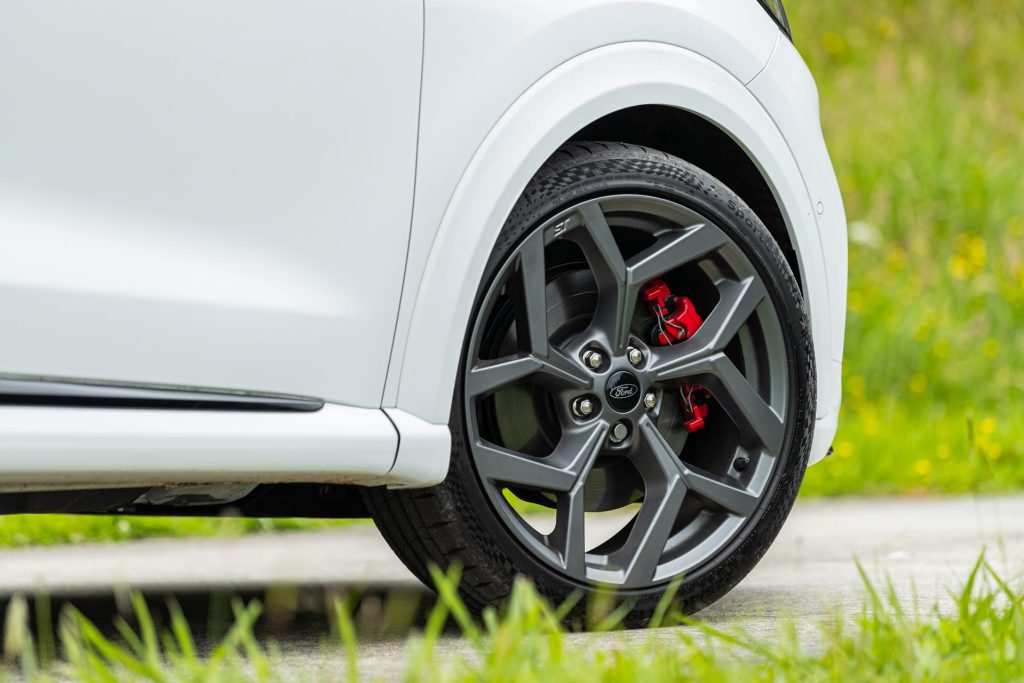
It isn’t that fast in a straight line, 100 coming up in seven seconds, 80-120 taking 5.1sec but it sure is quick point to point because of how it straightens the bends.
And despite all that rubber it’s not too loud on chipseal; we recorded a worst in cabin figure of 72.5dB.
Sports interior a good match
The seats are damn fine too; initially they seemed a little too upright in the squab but right as we handed it back I noticed a hidden lever to adjust this. Doh.
All adjustments are manual, other than the lumbar pump. With solid bolsters these Recaro pews really do lock you in place, especially as the squab is finished in Alcantara, the rest in leather.
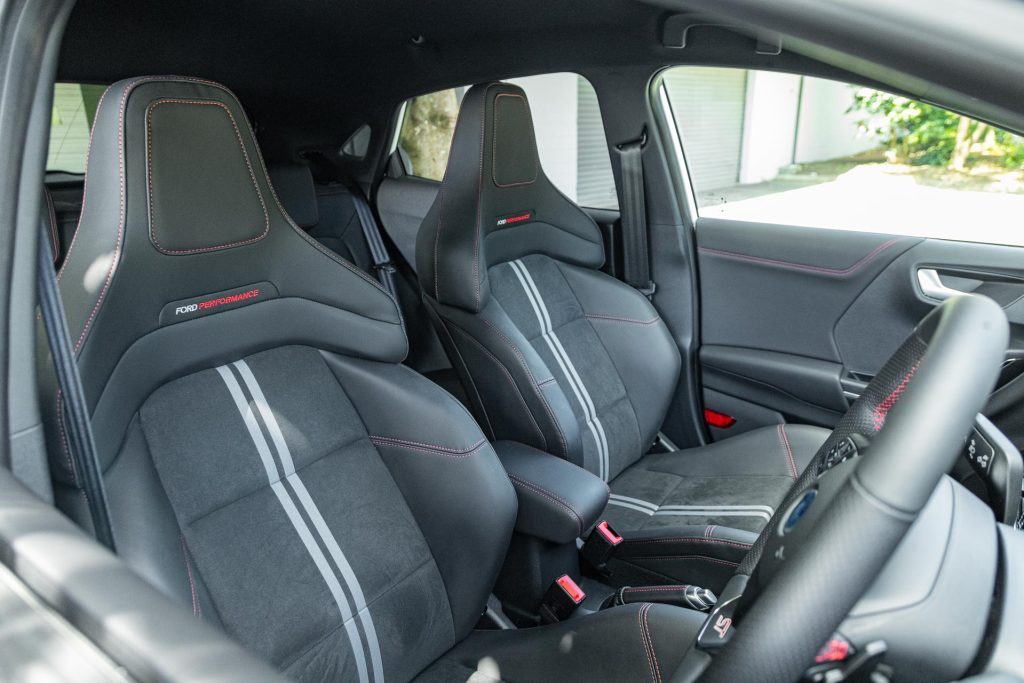
The cabin has a sprinkling of mock CF and the pedals are sports items.
A few final points. This is about as analogue as cars get these days. There’s even a mechanical handbrake, a modern rarity. To switch out lane keeping, just hit a button on the end of the indicator wand. Done.
To change stations or volume you rotate one of two knobs. Same for fan and temp settings. And the infotainment screen, essentially for stuff that doesn’t matter much, is discreet at eight inches.
But resolution is good enough to get a sense of where you’re at when reversing. And you’ll appreciate the abbreviated 4.2m of length and 10.5m turning circle in town environs.
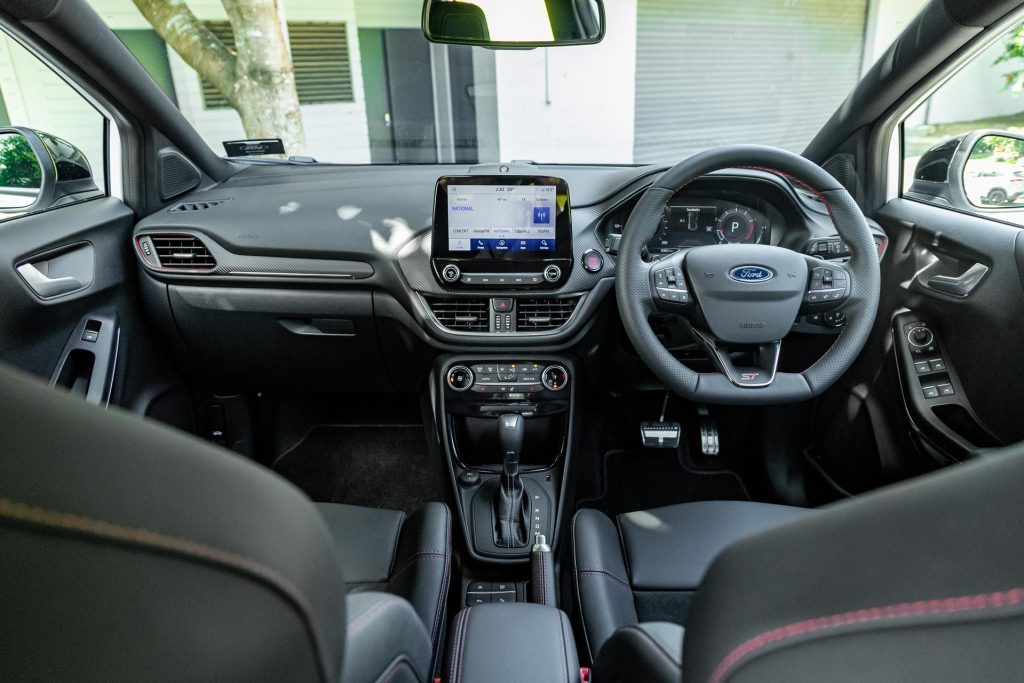
Visibility allround is first rate too. While room in the rear isn’t what you’d call generous, nor is it tight, with enough space for a pair of adults providing those up front aren’t giants.
Split folding gives a flattish space if the floor is mounted high, but when it’s dropped down there’s 456L of luggage space on hand, including an 80L Megabox with a drainage plug, so you can pack ice and drinks in there on a trip to the beach, and put the togs and towels there for the trip back. Clever stuff.
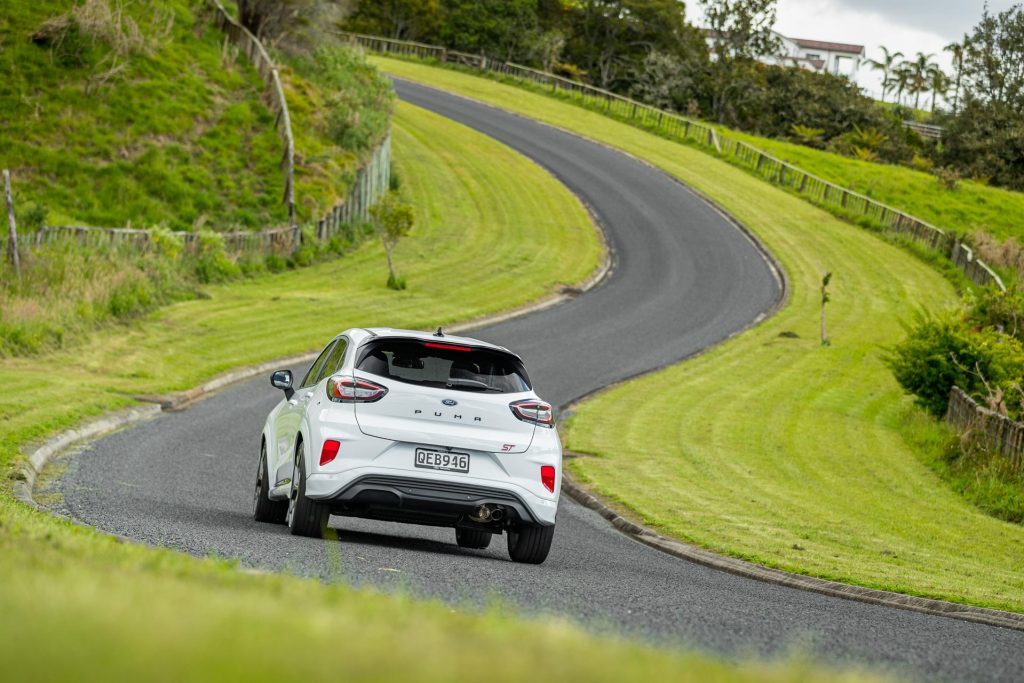
So providing you don’t mind a little starch in the slow speed ride, Puma ST meets its sports remit resoundingly. It’s big fun in a small package.
| Model | Ford Puma ST |
| Price | $46,490 |
| Engine | 999cc, IL3, T, DI |
| Power | 118kW @ 5750rpm |
| Torque | 200Nm |
| Motor Output | 11.5kW / 50Nm |
| Drivetrain | 7-speed twin-clutch, FWD |
| Total Hybrid Output | 125kW / 248Nm |
| Fuel Use | 6.2L/100km |
| C02 Output | 140g/km |
| 0-100km/h | 7.02 sec |
| Tyre Size | f/r-225/40/R19 |
| Fuel Capacity | 42L |
| Stability systems | ABS, ESP |
| Safety | AEB, ACC, BSM, LDW, RCTA, ALK, AHB |
| Luggage Capacity | 456-1216L |
| Tow rating | 665kg (900kg braked) |
| Service intervals | 12 months/20,000km |
| Warranty | 5 years/unlimited km |
| ANCAP rating | 4 Stars |
| Weight | 1394kg (claimed) |
This article first appeared in the December/January issue of NZ Autocar Magazine.


